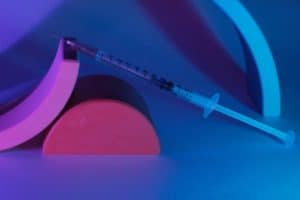Can you develop yeast infection on C section incision?
Some mothers prefer to deliver their young ones normally, while others prefer getting a C-section.
For others, it becomes a much-needed procedure when normal delivery doesn’t go well. Whichever delivery method one uses, they need some time to heal.
However, C-section scars take longer to heal.
While the whole process may be safe due to the advanced technology and medical expertise available today, there is still a possibility of a series of infections on the c section incision.
Your recovering body is more susceptible to postpartum infections, including yeast and urinary tract infections.
Some of these conditions are easy to treat, but some may be detrimental and significantly setback your recovery period.
Here’s all you need to know about infections on a C-section scar.
Yeast Infection on C Section Incision
One of the most common infections on a C-section scar is usually a yeast incision. It causes severe itchiness that may lead to a lot of discomfort and sleepless nights.
Yeast results from the candida, a fungus that is usually present in the GI tract.
It thrives in warm, moist environments like the surgical sites, diaper regions, and the vagina.
The fungus is, however, not only limited to the above regions. You might also notice it in other places, like:
- Surgical scars – after surgery, one is most likely to have moist skin under the dressing. If your clothing is too tight, it could lead to high humidity around the wound. This might lead to the growth of the fungus and consequently cause a yeast infection.
- You may also be having a folded skin that has over your incision. It may cause constant moisture contact, leading to yeast infection from the growing candida fungus.
Unfortunately, yeast infection on a C-section is likely to happen on a specific group of mothers, including the below:
- Obesity
- Diabetes or an immunosuppressive disorder like HIV
- Infection of the amniotic fluid and fetal membrane during labor
- Taking long term steroids
- Poor prenatal care ( few visits to the doctor)
- Previous cesarean deliveries
- No cautionary antibiotics or pre-incision antimicrobial care
- Long labor or surgery
- Excessive blood loss during labor
Vaginal yeast infections may also be common after the C-section because of the antibiotics administered to the patient after the surgery.
These antibiotics kill bacteria in the body to prevent a test infection from occurring on the incision.
However, the lack of good bacteria in the body will lead to yeast infection inside the body, mainly the vagina area.
If you feel ill or notice any concerning changes within the C-section incision, it is important to consult your doctor immediately for proper medical care.
Related post: C Section Incision Burning And Stinging
1. Signs and symptoms of a yeast infection
There are several ways to tell whether there is a yeast infection starting.
Some of the signs and symptoms of yeast infection will include
- Redness or swelling and some pain on the incision
- Increase of abdominal pain after delivery
- The wound starts to drain out or leakage of pus
- High fever
- Inability to pass out urine due to an intense burning sensation and pain
- A continuous flow of blood which may also be painful
- Vaginal bleeding may consist of blobs or clot like structures
- Swelling of the legs and intense pain.
- Itching dry skin
- A slight odor coming from the incision.
2. How to prevent yourself from yeast infections
If you are looking to prevent yourself from getting yeast infections, you should consider doing the following:
- Practice good hygiene
- Wear the right clothes. Avoid wearing clothes that are too tight for long periods • Avoid scented sprays and bath products
- Don’t douche
- Avoid certain medications if possible
- Maintain a proper diet, sleep, and exercise
- Keep the vagina clean and dry
You can also try increasing good bacteria in your diet by eating fermented foods like yogurt or kombucha.
If you have a C-section, ensure this foodstuff is part of your diet at least once a week before your cesarean and two or three weeks post-cesarean.
3. Treatment of yeast infections
Yeast infection on a C-section is treatable using antibiotics. Ensure you see your doctor for the best prescription, and avoid buying over the counter.
Unfortunately, yeast infection on C-section incisions is pretty common.
No need to panic, though. With the proper antibiotics prescription from your doctor and great care of the wound, your C-section will heal properly.
Related Post: Lifting Toddler After C Section

Iesha is a loving mother of 2 beautiful children. She’s an active parent who enjoys indoor and outdoor adventures with her family. Her mission is to share practical and realistic parenting advice to help the parenting community becoming stronger.



